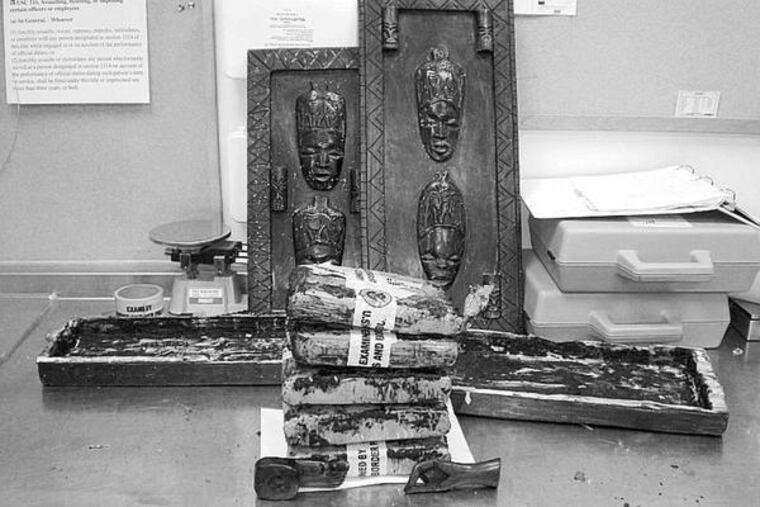Artsy, crafty smugglers' pot seized
Philadelphia Customs and Border Protection officers discovered more than 11 pounds of marijuana hidden in wooden African art during a routine inspection of international parcels on Sunday.

Philadelphia Customs and Border Protection officers discovered more than 11 pounds of marijuana hidden in wooden African art during a routine inspection of international parcels on Sunday.
The package - three rectangular pieces featuring twin traditional African animal-topped masks - seemed hollow when officers tapped the package.
The weight, about 11 pounds, was also suspicious, said customs spokesman Steve Sapp.
"Officers randomly inspect international air parcels," he said. "One of them felt peculiar. It started with officers' intuition."
Through an X-ray, CBP officers detected five brick-shaped packages inside the artwork and drilled into the frames.
A green leafy substance inside was extracted and tested for marijuana. Sapp said that customs officers have not been able to link the package to any specific individual.
Officials suspect that the parcel, flown on a British Airways flight, arrived from a centralized hub in Europe via an African country and was designated for Toronto, said Sapp.
He said that the seizure is the first time that he's known smugglers to use art as a drug mule.
"This has been a longstanding practice, a continual cat-and- mouse game between officers and smugglers," he said. "This forces them to change their tactics."
But technology and the use of law-enforcement canines helps officers counter drug dealers' efforts, said Sapp.
Besides narcotics, CBP officials intercept other illegal items including counterfeit money, violations of intellectual-property rights and product knockoffs like designer handbags, he said.
"We're looking for trends, if anything is coming from certain places or if they're going to certain locations," he said.
Sapp admits, however, that not every package is inspected. "Some days we could inspect 90 percent of parcels; other days we could inspect 10 percent," he said. *